Some finds from the past cannot avoid making an impression due to their sheer size, technical finesse or the physical endeavours required in order to produce them. One such spectacular find is the iron anchor, which was found in the ship-grave at Ladby on Funen.
The impressive iron anchor will now be recreated at the Viking Ship Museum.
Blacksmithing students demonstrate their craft
The Viking Ship Museum is hosting a group of students from the National School of Blacksmithing in England. They are going to forge an iron anchor for our new reconstruction of the late Viking Age warship, Skuldelev 5, which is currently being built at the Museum boatyard.
As part of their blacksmith education, the students are also learning about experimental archaeology and the reconstruction of archaeological artefacts.
They therefore contacted the Museum and suggested a collaboration, where they will forge an anchor for the Museum’s new ship while we share our experience on our experimental archaeological practice and approach to reconstruction.
Viking ship stripped of all loose components
Very few large-scale archaeological artefacts survive entirely intact and the ship-find Skuldelev 5 is no exception.
Roughly 50% of the ship’s hull survived the many centuries on the bottom of Roskilde Fjord, from when the ship was scuttled in the Viking Age until 1962, where the famous Skuldelev Ships were excavated.
The timbers that have survived represent the bare hull only. All five of the Skuldelev Ships had been stripped of all rigging, oars, rudders and any other components that could be removed and reused before the empty hulls were filled with stones and sunk to create a barrier across one of the sailing channels on the fjord.
Forging an anchor for the new warship
Which of course means that no anchors were recovered with the Skuldelev Ships either. For the anchor project, the team of blacksmiths have therefore chosen to base the anchor for Skuldelev 5 on one of the best-preserved anchors surviving from the Danish Viking Age, namely, the anchor from the ship-grave at Ladby on the island of Funen.
The anchor from Ladby is a so-called stock anchor. The stock, which is made of wood, sits at the top of the anchor at right angles to the flukes – the anchor’s ‘wings’. When the anchor is dropped, the stock and flukes ensure that and makes the anchor can get a hold of the seabed.
Info on the Ladby anchor:
The Ladby anchor – an impressive find, which can still be seen in the Ladby Ship.
A beautiful example of a Viking Age anchor was found in the ship-grave at Ladby in East Funen.
The stock anchor, together with its chain, was analysed and the iron was shown to have been forged from Norwegian iron. The chain is made of Swedish material, which may have been forged in Denmark as the welds contain traces of phosphor-rich Danish iron.
The anchor’s wooden stock, which sits at right-angles to the flukes, helps the anchor get a hold of the sea bed when in use.
Even though the wooden stock for the Ladby anchor has not survived, the Ladby anchor and its 11m-long chain are a key-find, which has given us unique insights into Viking Age maritime technology and craft skills.
The Ladby anchor is 1.26 m long and 0.83 m wide and equipped with an anchor chain which is estimated to have been ca. 11 m long.
The original Ladby anchor can still be seen today in situ – in its original resting place – in the remains of the ship-grave at Vikingemuseet Ladby.
See more on how to experience the Ladby ship-grave on Vikingemuseet Ladby’s website.
Blacksmiths from the National School of Blacksmithing will be working at the Museum from the 24th – 29th May.
Blacksmiths from the National School of Blacksmithing will start their work on their version of the Ladby anchor on the 24th of May and all who visit the Museum will be able to follow their work on the green area in front of the Viking Ship Hall from May 24th – 29th.
Come and see how the smiths recreate the Viking Age’s largest iron artefact: a ship’s anchor
Blacksmiths from England will forge an anchor to the new reconstruction of the ship-find Skuldelev 5 at the Viking Ship Museum.
When: 24th – 29th May 2024 24. maj 29. maj 2024
Where: The blacksmiths will be setting their forges up in the large tent in front of the Viking Ship Hall
Collaboration across national, generational and disciplinary borders
The anchor project is a perfect example of how the process of reconstructing artefacts ideally occurs in close collaboration between archaeologists, the natural sciences and craft experts specialised in traditional craftworking techniques.
For our work with experimental archaeology here at the Viking Ship Museum, it’s vital that the Museum continues to support and develop inter-disciplinary collaborations such as this.
It ensures that essential skills and techniques are passed on to the next generation of craftspeople – a generation who will hopefully play a central role in developing and improving experimental practice in the future.
Thanks
Many thanks to our colleagues from Vikingemuseet Ladby for providing access to their documentation of the anchor.
Thanks to the National School of Blacksmithing. Follow them on Facebook
Facts about Viking Age iron anchors
Anchors from stone to iron
The earliest anchors, which just used the weight of a stone to hold a ship in place, were not particularly effective.
Around 600 BC, a more effective design was developed in the Mediterranean area: the stock anchor. With the expansion of the Roman Empire, knowledge of this type of anchor spread to northern Europe during the 1st century AD.
In Viking Age Scandinavia, stock anchors were also used. These anchors were characterised by their long, slender shank, small flukes and two holes – one for the anchor rope and one for the buoy rope.
Viking Age anchors were forged from iron bars that were welded together and formed to a T-shaped blank which was then worked into the finished anchor.
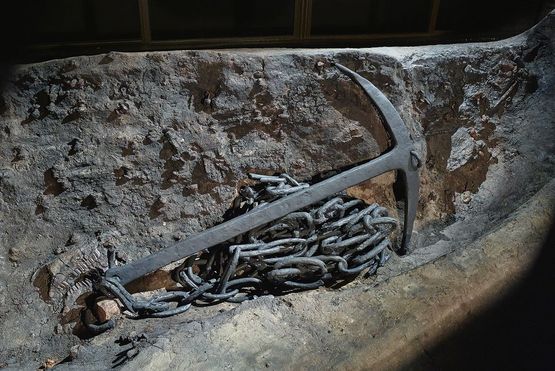


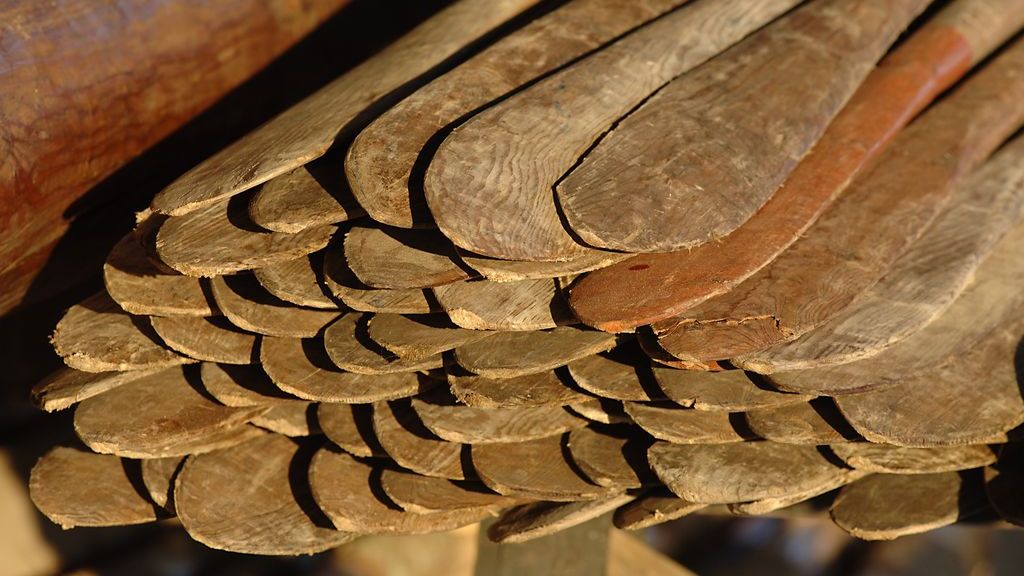
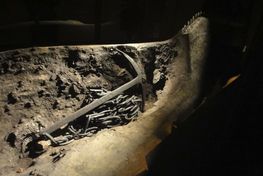
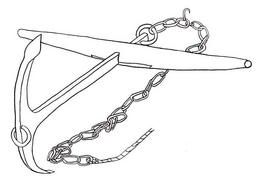
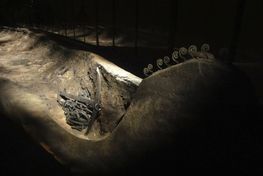
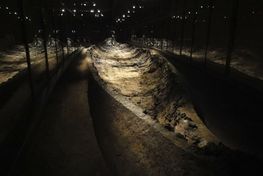
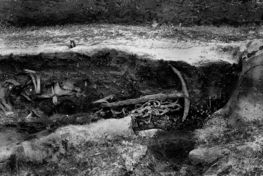
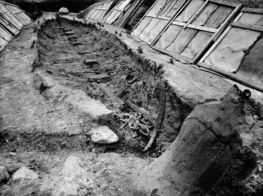
![[Translate to English:] Delene på et anker har særlige navne. Her kan du se hvad der er stok, flige mv. [Translate to English:] Delene på et anker har særlige navne. Her kan du se hvad der er stok, flige mv.](/frontend/_processed_/7/0/csm_Anker_dk_4e93ad25f1.png)